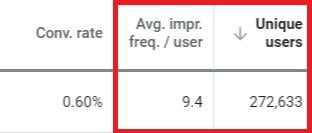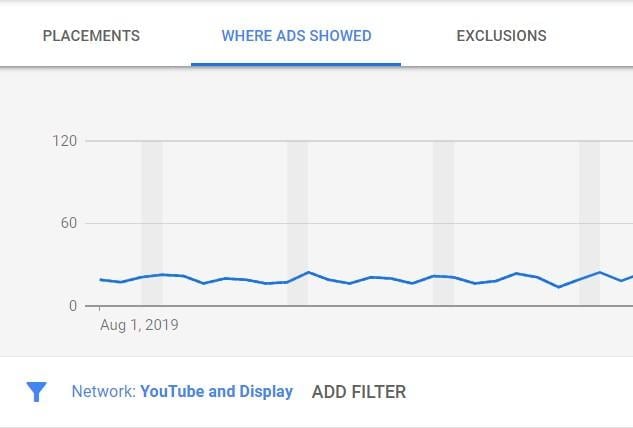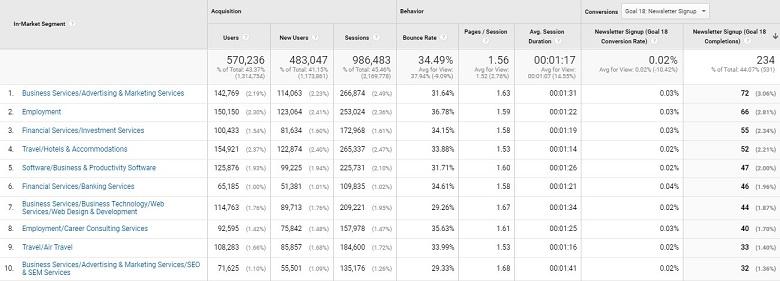Best practices. Man is that a buzzword or what? Personally, I hate saying the phrase. I hate assuming there is always one, standard way to do a certain task or strategy in a PPC account. Not every account is the same, and I will never look at any two accounts as the same.

But sometimes there are tactics or strategies that just work. No matter how much you embrace the testing mentality, some things are not worth the time trying to change. So while I admit my hate for the “best practices” buzzword, I do want to go over a few strategies I consider a must when creating any campaign on the Display Network:
- Keep your Search and Display Networks distinct
- Separate your remarketing audiences from new users
- Monitor frequency
- Take a deep dive into placement options
- Match your CTA with the best possible engagement
Let’s get to it.
1. Keep your Search and Display networks distinct
This recommendation all comes down to user intent. The Search Network and the Display Network approach users in two completely different mindsets. When users visit Google.com (or some of the search partners, like Ask.com), they are actively looking for an answer or a service. Typing keywords into a search engine is a clear indication of user intent.
With the Display Network, we are creating a disruptive experience. When users are on websites part of Google’s Display Network, such as ESPN or The New York Times, they are on those websites to get scores or read the news. They are not on those sites to see your advertisements. So when you are creating your new Search Network campaigns, do not be fooled by the default settings Google puts in front of you.

This is not anything new. Google Ads has been sneaking the Display Network into new search campaigns for many years. I do not care how small of a company you may be. I do not care how small your budget is. Separate your Search Network and Display Network campaigns into two, different campaigns. That way, you will have better control over performance, budgets, and targeting options. Plus, you will have a better success in optimizing the campaigns to meet the needs of the different user intents between the two networks.
2. Separate your remarketing audiences from new users
We just talked about the different in user intent from the Search Network and Display Network. User intent, however, can also vary within the same network. Users who have already been to your website or watched one of your YouTube videos are already familiar with your brand. You also probably want to change your ad message to speak differently to users who are already familiar with your brand and what you do, and here is where audience exclusions can help.

Use audience exclusions to separate your remarketing campaigns from your general, awareness campaigns. First, this will help prevent any overlap between the two audiences as best as possible. Next, as mentioned above, you will be able to change your budgets, bids, ads, and hopefully landing pages to better speak to the user further down the marketing funnel.
As for separating different remarketing audiences into their own campaigns, that is completely up to you. Most likely it will depend on the budget you want to allot to each audience and the main goal objective you are looking to achieve with the campaign.
3. Monitor frequency
For all the commuters out there, this scenario might sound familiar. You drive to work and you see a new billboard. It captures your attention at first, but you take the same route to work every day, so you become numb to billboard you see over and over again. The same situation can apply to your display ads. Eventually there will come a point where either goal conversions or engagement will drop off after a certain number of views.

In Google Ads, you can add specific reach columns to monitor how often users are seeing your ad as well as the number of unique users saw your display ads. As these numbers change, monitor how your CTR, conversions, conversion rates, or other KPIs (again depending on the campaign’s goals) change as your unique user and frequency numbers change.
You can then use this data to update your frequency capping settings in your Display Network campaigns. In your Display Network campaign settings, expand the “Additional settings” option. There, you will see the frequency capping section:

Advertisers can then update how impressions are limited. You can limit the impressions at the ad, ad group, or campaign level by day, week, or month. This is another component where this isn’t any magic frequency number for each count. You will have to monitor how your targeting options are engaging with your ad creative.
4. Take a deep dive into placement options
I still run into advertisers and clients all the time who think the Display Network is just a massive collection of websites. That is simply not true. If you are using targeting methods such keywords or topics, your display ads will be placed on automatic placements. These placements include websites, but they will also include video placements and app placements.
Advertisers also have the option to use managed placements. This means the advertiser can choose the exact placements they want their display ads to appear. But even this option isn’t 100% advertiser controlled. Google states clearly when selecting placements, “If a specific website you target has an equivalent app, your ads can also show there.”

If you don’t want your display ads to appear on mobile apps at all, Kirk Williams wrote a great blog on how to exclude all mobile app categories from your campaigns. This will make it easier to control your placements ever since app placements were automatically opted in to the Display Network.
On the other hand, I’ve also heard many clients want their ads to show only on sites closely related to their products. I am not saying this is a bad strategy—you should definitely target those sites first. But if you are looking to expand your reach, the placement report can really help.
Let me explain further: I once had a client who sold children’s toys on their website. Do you think their target audience only visits children’s toys websites? Of course not. We used other types of targeting like custom intent and, custom affinity (the two are now combined and simply called custom audiences), and in-market audiences to first test getting in front of the right audience. We created custom audiences for toy companies and other toy store names. We also targeted in-market audiences for any category related to parenthood (Childcare, Baby & Children’s Apparel, etc.).

You can then view where your ads were actually placed in the placements report, as shown in the image above, to find out where your target audience either engages the most or converts the most. For the client, we found websites for recipes, schools, affordable vacations, and other placements that were related to users who may have children. We could take these new ideas for placements you can add to your managed placement ad groups. Sometimes the right answer isn’t always the obvious one!
5. Match your CTA with the best possible engagement
Two of the most common targeting options for Display Network campaigns are in-market and affinity audiences. One typical way to research which of these options could be good to test for a new display campaign is to look at the Audience Manager within Google Ads and compare which of these audiences might show up depending what root audience you are viewing.
Another way—and the way I prefer—is to use the Interests Report in Google Analytics. This report can show you which In-Market and Affinity audience categories make up your current site visitors.

In the image above, we’re looking at the In-Market Segment report (found under Audiences > Interests in Google Analytics). We can then see the numbers for every goal conversion we have created in Google Analytics, as well as ecommerce transactions and revenue. Let’s pretend I wanted to target the “Business Services/Advertising & Marketing Services” In-Market audience for my next campaign. I can then see which conversion action works the best for my current users who fall under that In-Market audience. So, when I go out and try to target new users in the same audience, I can make the CTA on my display ads and corresponding landing pages match the conversion action that typically converts the best with those users.
Even if you don’t use In-Market or Affinity audiences, the best display ads still match their CTA with the best action a user will want to take. Not everyone is ready to buy now. Not everyone will want a free trial right away. Test out a variety of actions and find the right CTA for each targeting option you are using.
Now, go fill the top of your funnel!
Every account you manage won’t follow the exact same map to success. Like any PPC campaign we run, we have to keep testing new things in our Display Network campaigns to keep trying to improve performance and find new wins. And while each account may be different, use these “best practices” I mentioned to help your Display Network campaigns start off as successful as possible!







